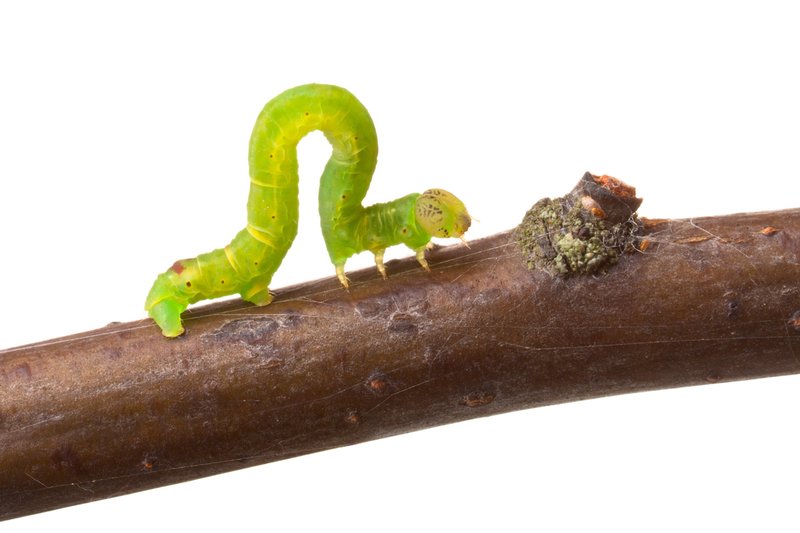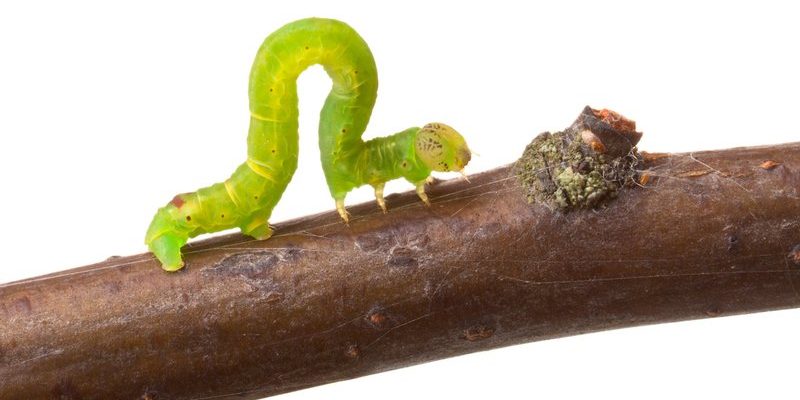
Inchworms belong to the caterpillar stage of moths, specifically the Geometridae family. They’re most famous for their looping movement, which resembles measuring inches on a ruler—hence the name! While they can seem adorable, their role in agriculture can be a double-edged sword. Some farmers treat them like guests in the garden, while others see them as uninvited troublemakers. So, what’s the verdict on inchworms in agriculture? Are they beneficial, or are they just pests? Let’s break it down.
What Are Inchworms Exactly?
Inchworms are the larval stage of certain moths within the Geometridae family. They’re known for their characteristic movement—pulling their bodies in and extending them out, which gives the illusion of “inching” along. This unique way of moving comes from their lack of prolegs, resulting in a caterpillar that can appear rather peculiar as it progresses forward.
These green critters blend in beautifully with foliage, making them excellent at camouflage. This natural ability helps them avoid predators, although it doesn’t make them immune to the dangers of being on a farmer’s radar. You might be surprised to learn that they can sometimes consume a wide variety of plants, including fruits, vegetables, and ornamental plants. The variety in species means that their impact can vary significantly depending on their specific habitat and food sources.
Fascinatingly, some species of inchworms are actually *used* in agriculture as a natural form of pest control. Their life cycle often aligns with the presence of other pests, making them a potential ally in keeping those populations under control. But how do we determine if they’re helpful or harmful in specific farming situations? Let’s take a closer look.
Inchworms as Beneficial Agents
You might be wondering how inchworms can be beneficial when they’re often associated with crop damage. Well, surprisingly, they can play a role in maintaining ecological balance. When their populations are controlled and kept in check, they might help limit other pest populations that do more harm to crops.
Inchworms primarily feed on young, tender leaves, which can be advantageous in controlled quantities. They can serve as food for birds and other predators, thus contributing to the food web in agricultural ecosystems. By supporting the presence of these natural enemies of other pests, farmers can reduce the need for chemical pesticides—a major plus for sustainable farming practices.
Moreover, having a diverse ecosystem, including inchworms, can enhance soil health and plant vigor. The decomposition of their frass (insect droppings) enriches the soil with nutrients. So, when managed well, inchworms can become a part of a farmer’s toolkit for natural pest management!
The Pests Among Us: Inchworms as Crop Destroyers
On the flip side, inchworms can sometimes act like little gremlins in the garden. When their numbers explode, they can cause significant damage to crops. For instance, if you have a field of young tomatoes or a beautiful garden of cabbages, a sudden infestation of inchworms can lead to rapid defoliation. The result? Weak plants that struggle to survive.
You might be looking at a crop loss scenario when these pests get out of control. Not only does this affect the immediate harvest, but it can also impact the overall health of the plants for seasons to come. Some farmers have even reported struggling with certain species that seem to have a taste for their favorite crops, leading to frustrating losses.
In addition to their feeding habits, inchworms can be carriers of certain plant diseases. While they munch on leaves, they can inadvertently spread pathogens from one plant to another. So, if you’re a farmer or a gardener, it’s essential to keep an eye on these critters and take action if their presence becomes overwhelming.
Identifying Inchworm Damage
One of the first steps in managing inchworm populations is recognizing the signs of their damage. If you notice that young leaves are being chewed or missing entirely, inchworms could be the culprits. Their feeding patterns typically result in ragged edges on leaves or complete defoliation of certain branches.
To determine whether inchworms are responsible, you can look closely at the plants and the ground beneath them. You might find them hiding in the shadows during the day. They tend to blend in beautifully, but if you spot their distinctive looping behavior or the tiny droppings they leave behind, you’ve likely encountered them.
For effective management, keep an eye out for these signs early in the growing season. Early detection can be crucial in preventing a larger infestation. Being proactive and knowing what to look for can save you a lot of heartache down the line.
Controlling Inchworm Populations
So, how do you handle those pesky inchworms if they start to invade your garden or farm? Here are some steps you can take:
- Natural Predators: Encourage birds and beneficial insects like parasitic wasps to reduce inchworm numbers.
- Handpicking: For smaller infestations, simply picking them off plants can be effective.
- Pheromone Traps: These can help keep track of adult moth populations, aiding in predicting future infestations.
- Organic Pesticides: If the situation worsens, consider using organic solutions that are effective yet gentle on the environment.
Taking these measures can help keep inchworm populations in check, allowing you to enjoy the benefits of having them around without suffering from their more destructive tendencies.
In the grand tapestry of agriculture, inchworms hold a complex position. They can be both allies and adversaries, depending on the context. When their populations are managed wisely, they contribute positively to the ecosystem, enhancing soil health and supporting natural predator dynamics. Yet, if left unchecked, they can evolve into significant pests that threaten crops.
Ultimately, the secret lies in balance. Understanding inchworms and their behaviors can empower farmers and gardeners to make informed choices. By identifying their presence, recognizing the signs of potential damage, and employing effective control measures, you can minimize their negative impact while still reaping the rewards of their ecological contributions.
So, the next time you see an inchworm wiggling its way along a branch, you’ll know they’re more than just little green critters—they’re part of a complicated conversation about nature’s balance in agriculture.

